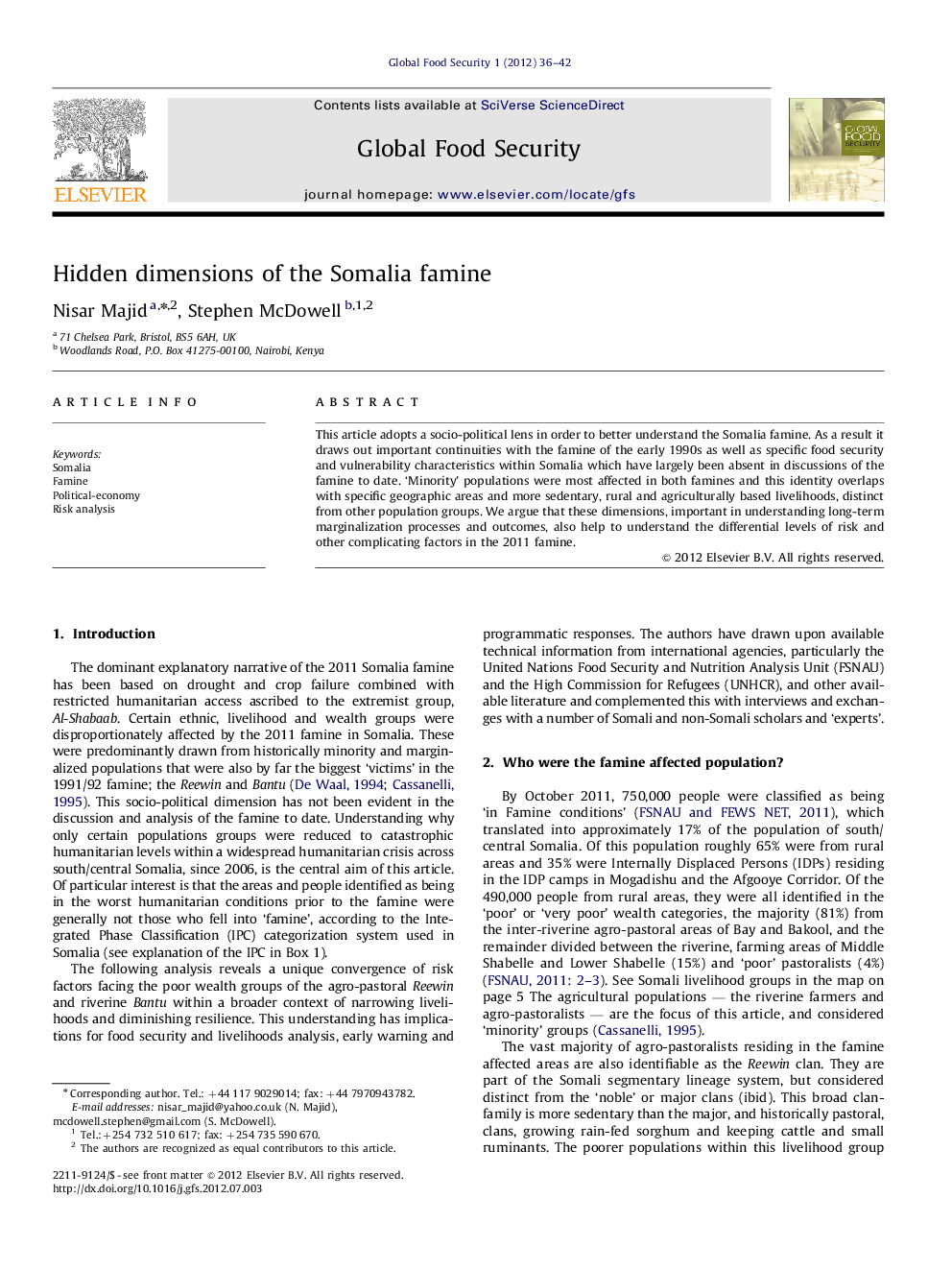| کد مقاله | کد نشریه | سال انتشار | مقاله انگلیسی | نسخه تمام متن |
|---|---|---|---|---|
| 1047620 | 945297 | 2012 | 7 صفحه PDF | دانلود رایگان |
This article adopts a socio-political lens in order to better understand the Somalia famine. As a result it draws out important continuities with the famine of the early 1990s as well as specific food security and vulnerability characteristics within Somalia which have largely been absent in discussions of the famine to date. ‘Minority’ populations were most affected in both famines and this identity overlaps with specific geographic areas and more sedentary, rural and agriculturally based livelihoods, distinct from other population groups. We argue that these dimensions, important in understanding long-term marginalization processes and outcomes, also help to understand the differential levels of risk and other complicating factors in the 2011 famine.
► A socio-political analysis was conducted to identify under-recognized famine causal factors.
► Dependency on agricultural labor was a key characteristic of the famine affected population.
► As in 1991, the 2011 famine affected population was predominantly drawn from two distinct ‘minority’ identity groups.
► Years of marginalization created high levels of risk specific to certain wealth and ethnic groups.
► Risk analysis including socio-political factors can improve famine predictive abilities.
Journal: Global Food Security - Volume 1, Issue 1, December 2012, Pages 36–42
